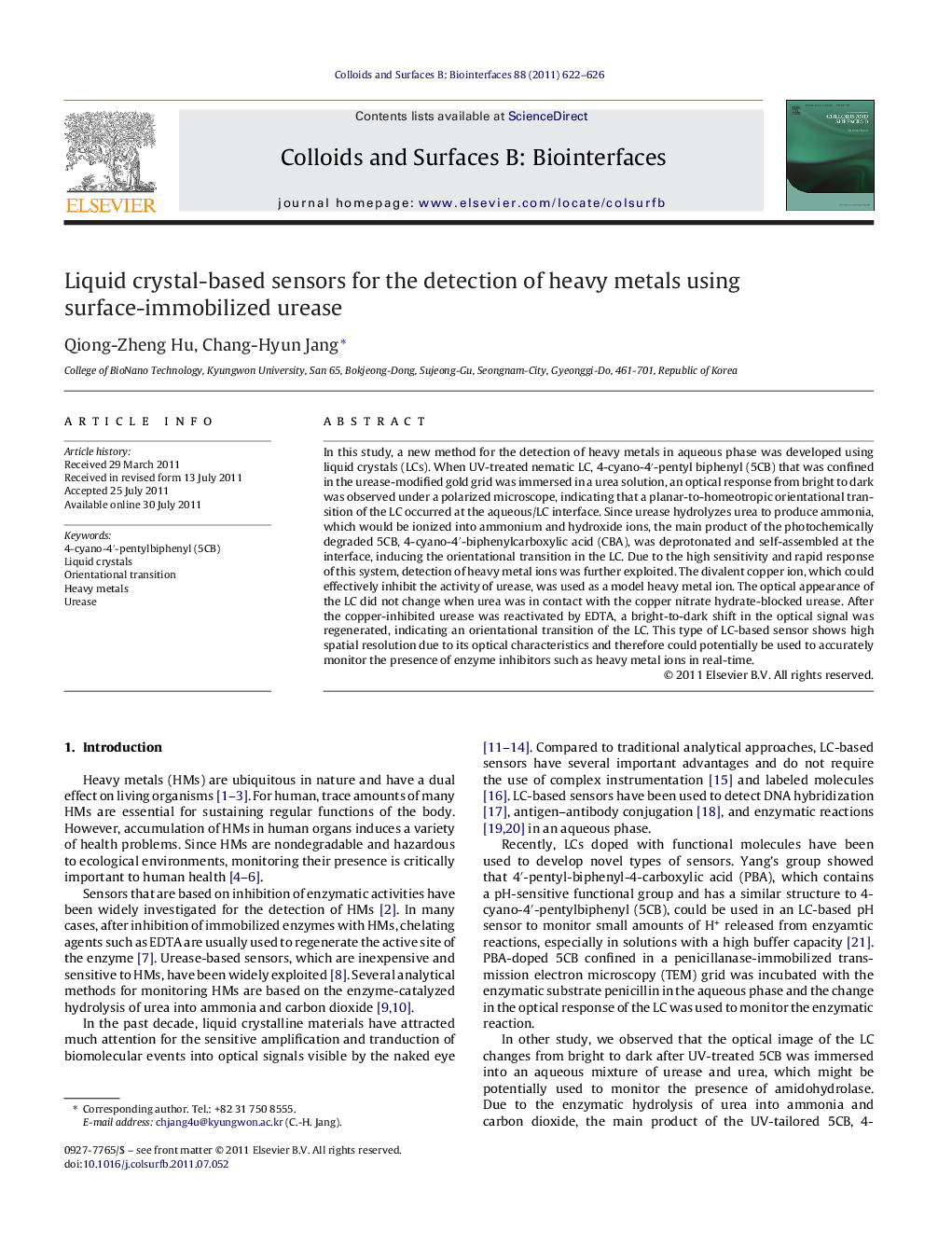| کد مقاله | کد نشریه | سال انتشار | مقاله انگلیسی | نسخه تمام متن |
|---|---|---|---|---|
| 601105 | 879931 | 2011 | 5 صفحه PDF | دانلود رایگان |

In this study, a new method for the detection of heavy metals in aqueous phase was developed using liquid crystals (LCs). When UV-treated nematic LC, 4-cyano-4′-pentyl biphenyl (5CB) that was confined in the urease-modified gold grid was immersed in a urea solution, an optical response from bright to dark was observed under a polarized microscope, indicating that a planar-to-homeotropic orientational transition of the LC occurred at the aqueous/LC interface. Since urease hydrolyzes urea to produce ammonia, which would be ionized into ammonium and hydroxide ions, the main product of the photochemically degraded 5CB, 4-cyano-4′-biphenylcarboxylic acid (CBA), was deprotonated and self-assembled at the interface, inducing the orientational transition in the LC. Due to the high sensitivity and rapid response of this system, detection of heavy metal ions was further exploited. The divalent copper ion, which could effectively inhibit the activity of urease, was used as a model heavy metal ion. The optical appearance of the LC did not change when urea was in contact with the copper nitrate hydrate-blocked urease. After the copper-inhibited urease was reactivated by EDTA, a bright-to-dark shift in the optical signal was regenerated, indicating an orientational transition of the LC. This type of LC-based sensor shows high spatial resolution due to its optical characteristics and therefore could potentially be used to accurately monitor the presence of enzyme inhibitors such as heavy metal ions in real-time.
Figure optionsDownload as PowerPoint slideHighlights
► We report a new method for the detection of heavy metals in aqueous phase using liquid crystals.
► We investigated the orientational properties of UV-tailored nematic LC with surface-immobilized urease.
► Divalent copper ions, which could effectively inhibit the activity of urease, were used as a model heavy metal ion.
► This type of LC-based sensor shows high spatial resolution due to its optical characteristics and therefore could potentially be used to accurately monitor the presence of enzyme inhibitors such as heavy metal ions in real-time.
Journal: Colloids and Surfaces B: Biointerfaces - Volume 88, Issue 2, 1 December 2011, Pages 622–626